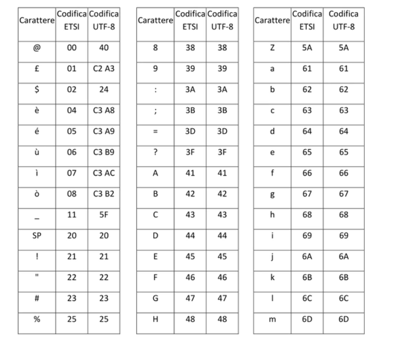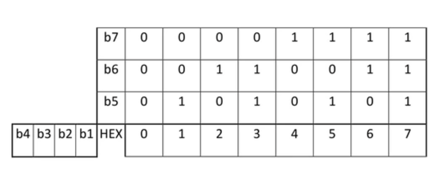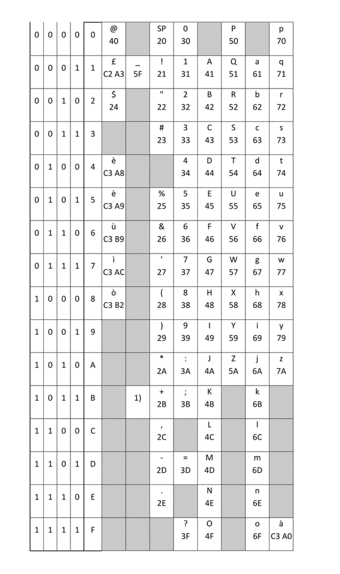WebSMS - Code of Conduct
Relating to the provision of business messaging services containing alphanumeric codes (Aliases) as senders (Code)
Preamble
This Code of Conduct is drafted pursuant to Article 5, paragraph 4, of the Resolution of the Autorità Garante delle Comunicazioni (AGCom) - that is the Italian Communications Regulatory Authority - 42/13/CIR "Rules for the experimentation of alphanumeric indicators to identify the sender in the SMS/MMS used for corporate messaging services" (Resolution) and is intended to regulate the establishment, assignment and use of Aliases within the framework of corporate messaging services and to define the rules for the protection of the users of such services.
Messaging services
The messaging services are services provided by an authorized suppler pursuant to the Resolution for the benefit of a Client/Company, natural or legal person, which intends to reach its End Customers through SMS or MMS type messages, by communicating its own offers of products or services, or service information and, as the case may be, requesting from the same End Customers a response to the sent communication. The messaging services that involve sending a message to End Customers are commonly referred to as "MT" (Mobile Terminated) messaging services while messaging services that involve a response from End Customers, are referred to as "MO" (Mobile Originated) messaging services. MT services may be provided through the use of Aliases in place of the CLI code. This Code will only address corporate messaging services through use of Alias.
1. Definitions
For the purposes of this Code, consistent with the aforementioned resolution, the following are defined:
(a) Client/Company
The natural or legal person using or requesting to use a business messaging service, through subscription to an offer from a business messaging service provider;
(b) End Customer.
The natural or legal person using or requesting to use a publicly accessible electronic communication service for purposes not related to the work, business or professional activity performed;
(c) Business Messaging.
SMS/MMS type communications, in single or bulk mode, to End Customers by a Client/Company, such as Companies or Entities, for social, informational and advertising purposes;
(d) Corporate Messaging Service Provider.
Legal entity authorized pursuant to Article 25 of the CCE that provides on the basis of specific contracts with Clients/Companies the corporate messaging service through the use of Aliases towards End Customers (see Article 4 paragraph 1);
(e) Access Service Provider.
Legal entity authorized under Article 25 of the CCE that provides mobile services, including messaging service, to the End Customer;
(f) CLI - Calling line identification.
Identification of the calling line by means of the number defined by the ITU-T Recommendation E.164 and nationally by the National Numbering Plan (Del. 52/12/CIR as amended) associated with the same line;
(g) Alias
String of alphanumeric characters transmitted in the field provided for sending the sender/CLI in SMS/MMS communications not longer than 11 characters as indicated in Annex A to this Code.
2. Principles underlying the Code
The Code is aimed at ensuring the proper development of business messaging services by ensuring the rights of Clients/Companies on the one hand and End Customers on the other hand and fair competition among industry players.
In this context, industry players intend to give themselves common rules of conduct with the aim of growing the market through respecting the rights of End Customers who are the recipients of messages. In this regard, industry players will adopt their best experience and diligence to ensure the proper use by Clients/Companies of Aliases.
3. Establishment of the Aliases
The Aliases consist of a set of alphanumeric strings no longer than 11 characters, the details of which are set out in Appendix A of this Code.
4. Assignment of the Aliases
The assignment of Aliases shall take place on the basis of current trademark regulations.
The Business Messaging Service Provider shall take the utmost diligence in order to prevent parties who do not own rights to a particular Alias from using Aliases whose legitimate use is vested in third parties under trademark regulations. To this end, in the first instance, Business Messaging Service Providers will adopt procedures for Client/Company authentication using credentials in such a way as to ensure that the Client/Company who has subscribed to a Business Messaging Service offering is indeed the party who accesses the message delivery system and uses Aliases.
In addition, Corporate Messaging Service Providers will do their best in order to include in their contracts with Customers/Companies special clauses in which they will make Clients/Companies assume responsibility about the use of only Aliases that they legitimately have, and for this purpose they can also make the Client/Company sign a special self-declaration.
Client/Company found to have used Aliases illegitimately will be inhibited from using the relevant Aliases.
5. Assignment of Generic Aliases
The Resolution prohibits the use of Aliases already used for other Clients/Companies and which do not differ significantly from Aliases already used. In this context, the assignment of generic Aliases is permitted as long as Clients/Companies undertake in their contracts with Business Messaging Service Providers to include in the text of the message a reference to their own company name or their own brand legitimately used in order to be still recognizable to the End Customer.
6. Assignment of Aliases that refer to public bodies and institutions
Aliases that refer to Public Bodies and Institutions are reserved exclusively for the same Bodies or Institutions and may not be associated with other entities.
7. Uploading Aliases to the database managed by AGCom.
Before sending a message with Aliases, the Providers of business messaging services will take care of uploading to the database managed by AGCom (for brevity also "Alias System") the Aliases used by Clients/Companies.
The following information will be indicatively entered in the database:
- Alias and E.164 numbering associated;
- Client/Company name, VAT number/tax code;
- Clientr/Company contacts: single contact data between phone number, fax number, e-mail address;
- Termination of use of Alias when it is no longer in use;
The name of the Business Messaging Service Provider as well as the date and time of the records are automatically detected by the Alias System.
8. Use of Aliases by Client/Company.
The use of Aliases is allowed for Client/Company who have signed up for business messaging services with Business Messaging Service Providers who have obtained in use one or more E.164 numbers of the PNN to be associated with the Aliases, in compliance with Article 3, paragraph 2 of the Resolution.
Several different Business Messaging Service Providers may subscribe to an offer of business messaging services with the same Client/Company.
Each Clientr/Company must have a unique numbering associated with it. Multiple Aliases may be associated with that numbering as long as they are used by the same Client/Company.
9. Cessation of use of Aliases by Clients/Companies
A given Alias will remain active as long as the contract between the Business Messaging Service Provider and the Client/Company is in force, except if, while the contract is in force, it is the Client/Company itself that notifies the Provider that it no longer wishes to use a given Alias.
Within 24 hours after the termination of the contract between the Business Messaging Services Provider and the Business Client or the receipt by the Business Messaging Services Provider of notice that it no longer wishes to use a particular Alias, the Provider will notify the Alias System of the termination of the use of the Alias.
10. Protection of End Customers.
The End Customer who receives an SMS/MMS message with an Alias as sender that is deemed unexpected, misleading or spam, may contact the Customer Care of its mobile operator by reporting the case and communicating to the operator the following necessary information in order to carry out the necessary checks:
a) numbering of the End Customer;
b) Alias appearing in the message sender;
c) day, date and time of receipt.
Customer Care, through querying the database managed by AGCom, receives the following information regarding the Client/Company that sent the message and communicates it to the End Customer:
- Client/Company name;
- Alias used;
- Client/Company contacts.
In the event of a request by the competent Authorities for the tracking data of the sent message, the Provider of business messaging services will deliver such data in the shortest time possible so as to ensure the purposes of justice.
11. Subsequent versions of the Code
The Business Messaging Service Provider reserves the right to prepare new and more evolved versions of this Code in the future in order to better meet the business needs of industry players and the better protection of the rights of End Customers, hand in hand with the evolution of business messaging services containing Aliases and the related discipline, which is currently still in an experimental phase.
Annex A -Set of characters allowed for the establishment of aliases
With reference to paragraph 6.2.1 "GSM 7 bit Default Alphabet" of the technical standard "Digital cellular telecommunications system (Phase 2+); Universal Mobile Telecommunications System (UMTS); LTE; Alphabets and language-specific information", 3GPP TS 23.038 version 11.0.0 (2012- 10) Release 11, only the following is permissible for alias establishment.
1. Lowercase and uppercase letters of the international alphabet:
- ABCDEFGHIJKLMNOPQRSTUVXYWZ (HEX codes 41 to 5A respectively)
- abcdefghijklmnopqrstuvxywz (HEX codes 61 to 6A respectively)
2. Accented lowercase letters found in the Italian keyboard:
- èéùìò (HEX codes 04 to 08 respectively)
- à (HEX code 7F)
3. The digits 0 to 9
- 0123456789 (HEX codes 30 to 39 respectively)
4. Common punctuation marks:
- SP (space: HEX code 20)
-!(exclamation mark: HEX code 21)
-' (apostrophe: HEX code 27)
-, (comma: HEX code 2C)
-. (period: HEX code 2E)
-: (colon: HEX code 3A)
-; (semicolon: HEX code 3B)
-? (question mark: HEX code 3F)
The preceding characters may not be preceded by the space character. Consecutive use of spaces is not permitted.
-" (quotation marks, HEX code 22)
In an Alias, there can only be two quotation marks: one as opening and one as closing. The first cannot precede a space and the second cannot follow a space.
5. Common currency symbols
- € (euro: two-character code HEX 1B 65)
- £ (lira: code HEX 01)
-$ (dollar: code HEX 02)
6. Common mathematical symbols
-% (percent: code HEX 25)
-( (open round bracket: code HEX 28)
-) (closed round bracket: code HEX 29)
-+ (plus: code HEX 2B)
- - (minus or even hyphen: code HEX 2D)
-= (equal: code HEX 3D)
7. Symbols used on the Internet:
-@ (snail or "at" : HEX code 00)
-_ (underlined or "underscore" : HEX code 11)
-# (hash or "hash" : HEX code 23)
-& (and: HEX code 26)
-* (asterisk or "star" : HEX code 2A)
Ultimately, the list of allowed characters and the related ETSI hexadecimal encodings to be used in SMS/MMS transmission as well as the related UTF-8 hexadecimal encodings to be used in communication to the Authority's database are:


Accordingly, the table of usable characters organized according to the ETSI encoding is as follows:


Where, "SP" corresponds to the space character, "1" is not a character but indicates the code (HEX 1B) to be prefixed to indicate the characters in the Extension table.
In particular, HEX 1B encoding 65 corresponds to the character "€," whose UTF-8 encoding is E2 82 AC. The character "€" is the only usable character in the Extension table. In each cell, the character corresponding to the encoding according to the 3GPP TS 23.038 version 11.0.0 (2012-10) standard is shown in the first line.
The second line shows the relevant UTF-8 encoding to be used in communications to the AGCOM DB.
WebSMS Code of Conduct Rev. 1/2024